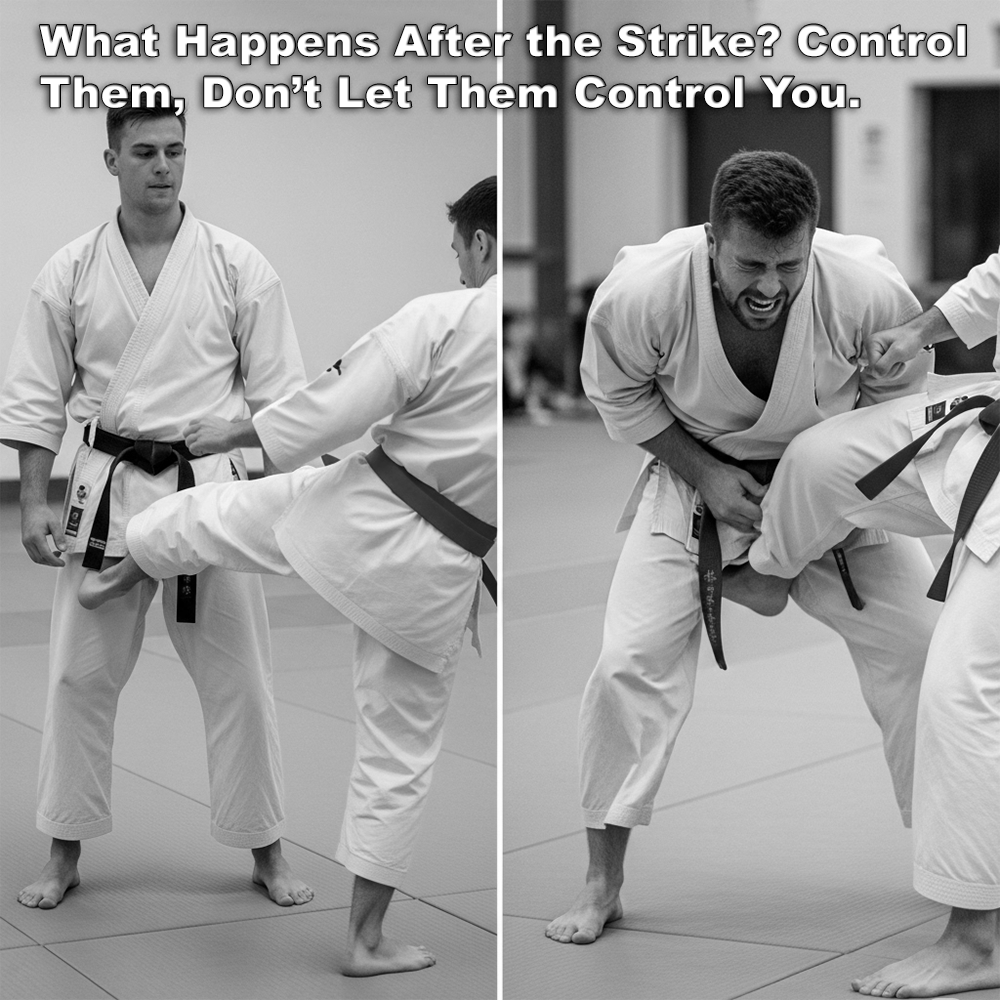
(Approx 2 minute 10 second read)
Have you ever wondered why so many techniques in kata seem aimed at the chudan (mid-level)?
.
Guess what? Perhaps they’re not.
.
What if the real purpose is to provoke a predictable reaction from your opponent – one that opens up the head or neck as the actual target?
.
Choki Motobu once said, “In a real confrontation, more than anything else, one should strike the face first, as this is the most effective.”
.
In a real fight, there are infinite possibilities. Yet, certain actions tend to provoke instinctive reactions. For example, a strike to the groin can cause an opponent’s hands to drop to protect that area. Their head, shoulders, and torso may tilt forward, exposing their head and neck.
.
This means many kata movements, which appear to target a specific area, might actually be designed to elicit such a reaction, setting up strikes to more vulnerable areas like the head or neck, or for setups to throws and controlling techniques.
.
Of course, people don’t all respond the same way, so these are not guaranteed or predetermined. But this concept is worth considering when searching for practical applications in your kata.
.
Modern bunkai demonstrations often look unrealistic because they rely on an opponent’s compliance – of course, it’s just a demo. But effective bunkai happens when the opponent resists and reacts to your movements.
.
We’ve all seen demonstrations where the attacker simply waits to be struck. That may help beginners learn, and it can be important for demonstrating, but in reality of course, no one stands still like that. So their reaction needs to be taken into account.
.
What happens when your opponent is struck, moved, or unbalanced. Where do they go? How do their limbs, torso, head, and neck shift? What is their likely reaction – and importantly, how do you respond to that?
.
For example, an opponent will usually try to move away from pain. Your follow-up techniques must acknowledge these instinctive, involuntary movements so you need to think about this in any deconstruction.
.
While you can’t count on your opponent to comply, some physical responses are instinctive – and maybe predictable.
.
So it’s worth thinking about those responses when you analyze and practice kata.
.
There are many excellent instructors sharing impressive bunkai. But some, even reputable ones, rarely show how attackers realistically respond.
.
Real-world self-defense is messy and chaotic. After you land a hit, what happens next? If your follow-up is half-hearted or ineffective, your defense falls apart. Show what would realistically happen next.
.
One of the most knowledgeable instructors on practical karate, Vince Morris, 9th dan and founder of Kissaki Kai, noted that “some students demonstrate a marked lack in the impact power of their counter techniques.” When that happens – when your countermeasures fail – it needs to be addressed honestly. What happens next? What’s your backup plan?
.
Good bunkai isn’t just about the technique you do – it’s about understanding and responding to how people actually react when they’re hit.
.
Control them, don’t let them control you. Always think through the possible. And if you have to hit, hit hard.
.
.
Written by Adam Carter – Shuri Dojo
